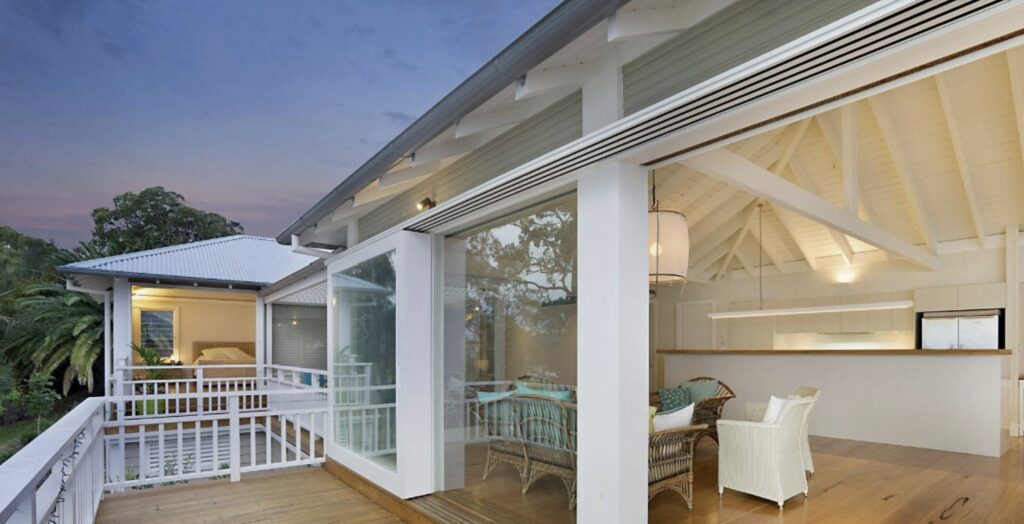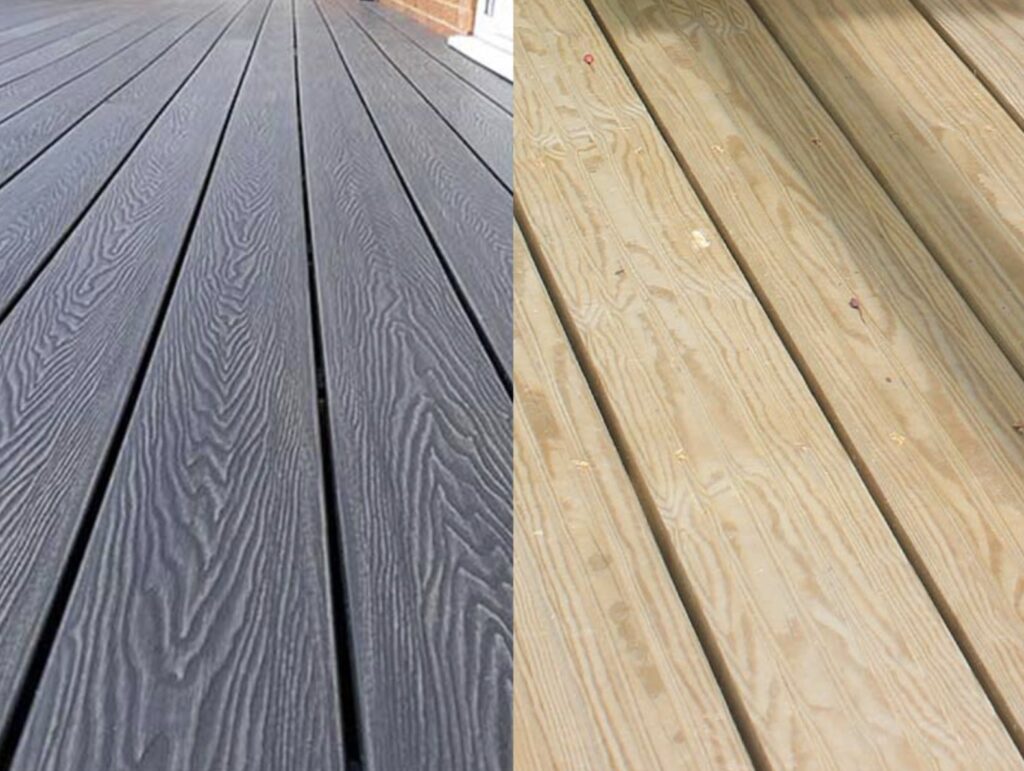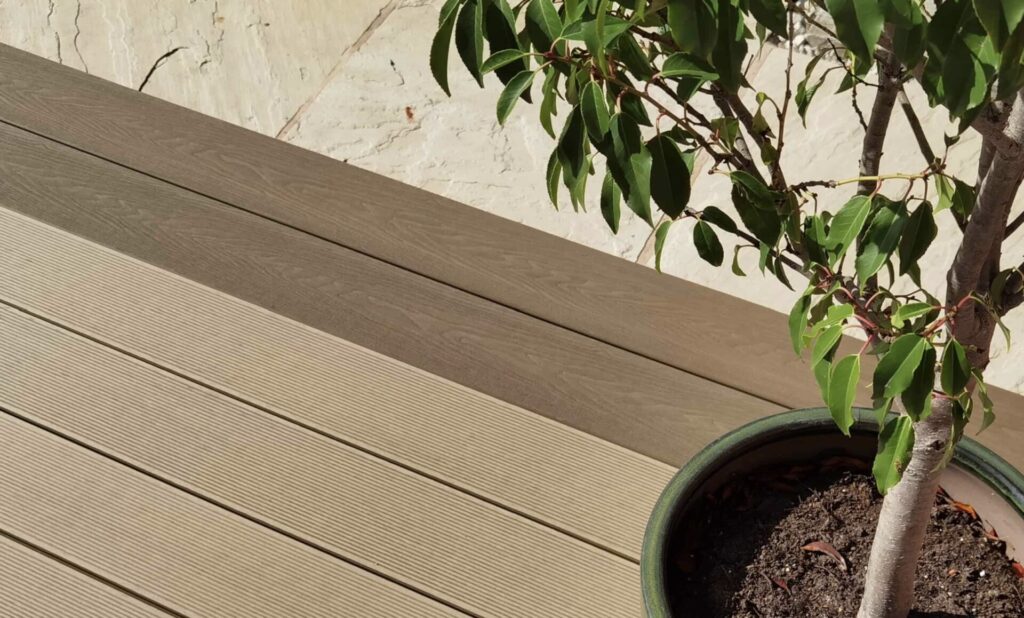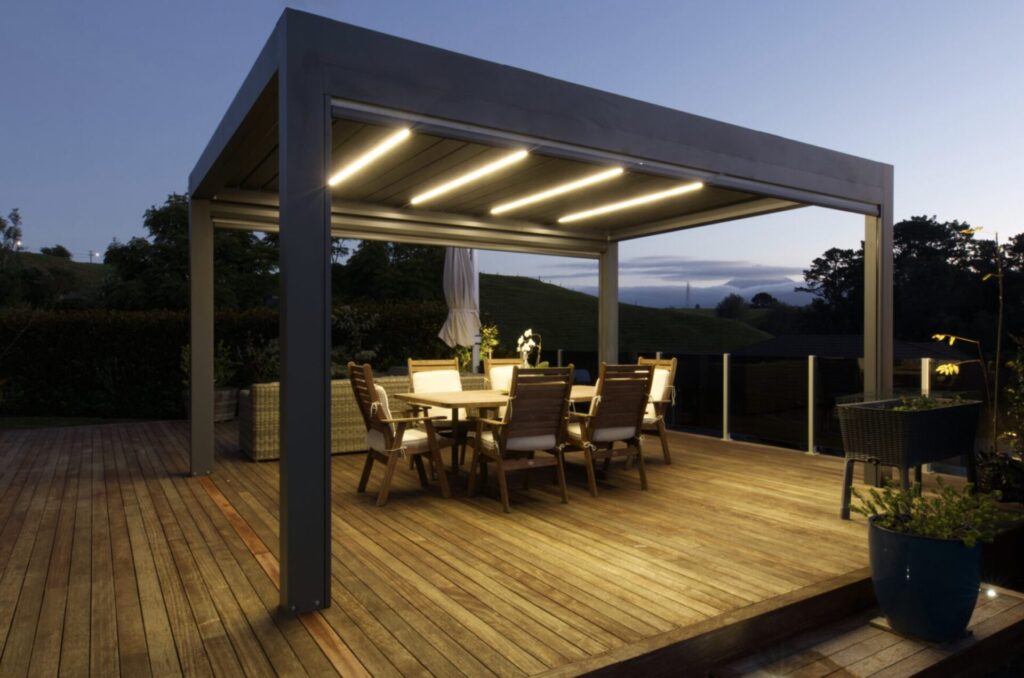When it comes to building a deck, choosing the right material is crucial. In New Zealand, the two most popular options are timber and composite decking. Timber decking has been a traditional choice for many years, while composite decking is a newer alternative that has been gaining popularity in recent years. Both materials have their own advantages and disadvantages, and it’s important to weigh them carefully before making a decision.
Understanding the differences between timber and composite decking is the first step in making an informed decision. Timber decking is made from natural wood, while composite decking is a combination of wood fibers and plastic. Timber decking is known for its natural beauty and warmth, while composite decking offers a more uniform appearance and is often considered more durable. However, composite decking can be more expensive than timber decking, and some people prefer the look and feel of natural wood.
Key Takeaways
- Timber and composite decking are the two most popular options for building a deck in New Zealand.
- Timber decking is made from natural wood, while composite decking is a combination of wood fibers and plastic.
- Both materials have their own advantages and disadvantages, and it’s important to weigh them carefully before making a decision.
Table of Contents
Understanding Timber and Composite Decking
When it comes to choosing the right decking material for your outdoor space in New Zealand, there are two main options to consider: timber and composite decking. Both materials have their unique characteristics, advantages, and disadvantages, which you should consider before making a decision.
Timber Decking
Timber decking is a classic choice that has been used for many years in New Zealand. It is made from natural wood, which gives it a unique and warm look that many people love. Timber decking is available in different types of wood, including pine, cedar, and hardwoods like kwila and vitex.
One of the advantages of timber decking is that it is relatively affordable, especially if you choose softwood like pine. It is also easy to work with and can be cut and shaped to fit any size or shape of the outdoor space. Additionally, timber decking is a sustainable option since wood is a renewable resource.
However, timber decking requires regular maintenance, including staining, sealing, and cleaning, to keep it in good condition. It is also prone to rot, decay, and insect damage if not properly maintained. Timber decking can also be slippery when wet, which can be dangerous.
Composite Decking
Composite decking is a modern alternative to timber decking that has gained popularity in recent years. It is made from a combination of wood fibers and plastic, which gives it a durable and long-lasting finish. Composite decking is available in different colors and textures, which mimic the look of natural wood. Learn more about capped vs uncapped decking and it’s effects on durability.
One of the advantages of composite decking is that it is low maintenance. It does not require staining, sealing, or painting, and it is resistant to rot, decay, and insect damage. Composite decking is also slip-resistant, which makes it a safer option for outdoor spaces.
However, composite decking is more expensive than timber decking, especially if you choose high-quality materials. It can also be more difficult to work with, and you may need special tools to cut and shape it. Additionally, composite decking is not a sustainable option since it is made from plastic, which is not biodegradable.
In conclusion, choosing the right decking material for your outdoor space depends on your personal preferences, budget, and lifestyle. Both timber and composite decking have their advantages and disadvantages, and you should weigh them carefully before making a decision.

Pros and Cons of Timber Decking
If you are considering building a deck for your home, timber decking is a popular option in New Zealand. Timber decks offer a natural and classic look that can complement any outdoor space. However, like any building material, timber decking has its pros and cons.
Pros
- Aesthetics: Timber decking has a natural and warm look that can enhance the beauty of your outdoor space. It can also be stained or oiled to match your desired color and style.
- Sustainability: Timber is a renewable resource, and if sourced responsibly, it can be an environmentally-friendly option.
- Affordability: Timber decking can be more affordable than composite decking, especially if you are using locally-sourced materials.
Cons
- Maintenance: Timber decking requires regular maintenance to keep it looking its best. This includes cleaning, staining, and oiling to protect against weathering, rotting, and insect damage.
- Durability: Timber decking is not as durable as composite decking and can be prone to warping, cracking, and splintering over time.
- Stain and Oil: While stain and oil can enhance the look of your timber deck, they also require regular application, which can be time-consuming and expensive.
Overall, timber decking can be a great option for those looking for a natural and classic look for their outdoor space. However, it does require regular maintenance and may not be as durable as composite decking.
Pros and Cons of Composite Decking
If you’re considering building a new deck, you may be wondering whether to use timber or composite decking. Composite decking is a popular choice for many homeowners, as it is often marketed as being maintenance-free and made from recycled materials. However, as with any building material, there are both pros and cons to using composite decking.
Pros
- Low maintenance: Composite decking is often marketed as being maintenance-free, meaning that it requires little to no upkeep. Unlike timber decking, which requires regular staining or oiling, composite decking can be cleaned with just soap and water.
- Durable: Composite decking is designed to be incredibly durable, with many manufacturers offering warranties of up to 25 years. This means that your deck is likely to last longer than a timber deck, which may require replacement after a few decades.
- Eco-friendly: Many composite decking materials are made from recycled materials, such as plastic bags and sawdust. This means that using composite decking can be a more environmentally friendly option than using timber.
Cons
- Expensive: Composite decking can be more expensive than timber decking, with some brands costing up to three times as much. However, this cost can be offset by the fact that composite decking requires less maintenance over the long term.
- Not as natural-looking: While composite decking can be made to look like timber, it can often look less natural than the real thing. This may be a consideration if you’re looking for a traditional-looking deck.
- Not as heat-resistant: Composite decking can become hot to the touch in direct sunlight, which can be uncomfortable for bare feet. This may be a consideration if you live in a hot climate.
In conclusion, composite decking can be a great choice for a low-maintenance, durable, and eco-friendly deck. However, it is important to consider the cost and the natural look of the material, as well as its heat resistance, before making a decision.

Comparing Decking Materials
When it comes to decking materials, there are two main options to choose from: timber and composite. Both have their advantages and disadvantages, and the right choice for you will depend on your needs and preferences. In this section, we will compare the two materials to help you make an informed decision.
Timber Decking
Timber decking is a popular choice in New Zealand due to its natural look and feel. There are various types of timber available, including hardwood, softwood, pine, bamboo, kwila, vitex, garapa, and macrocarpa. Each type of timber has its own unique characteristics and properties.
Hardwood is a dense and durable option that can last for many years. It is resistant to decay and insect damage, making it a great choice for outdoor use. Softwood, on the other hand, is less dense and less durable than hardwood. Pine is a common type of softwood used for decking, and it is a more affordable option compared to hardwood.
Bamboo is a sustainable and eco-friendly option that is becoming increasingly popular. It is a strong and durable material that is resistant to moisture and insects. Kwila, vitex, garapa, and macrocarpa are all hardwoods that are commonly used for decking in New Zealand. They are all durable and resistant to decay and insect damage.
Composite Decking
Composite decking is made from a combination of wood fibres and plastic. It is a low-maintenance option that is resistant to rot, decay, and insect damage. Composite decking is available in a range of colours and styles, and it can be made to look like natural wood.
One of the main advantages of composite decking is its low maintenance requirements. Unlike timber decking, it does not require regular staining or sealing. It is also resistant to fading and staining, making it a great choice for high-traffic areas.
However, composite decking can be more expensive than timber decking. It is also less environmentally friendly, as it is made from a combination of wood fibres and plastic.
Conclusion
In conclusion, both timber and composite decking have their advantages and disadvantages. Timber decking is a natural and affordable option that can be customised to suit your needs. Composite decking is a low-maintenance and durable option that is available in a range of colours and styles. Your choice will depend on your needs and preferences.
Aesthetics and Personal Preference
When it comes to aesthetics, timber and composite decking both offer unique advantages. The natural look and feel of timber decking is hard to beat, and many people enjoy the natural colour range that comes with timber. On the other hand, composite decking can offer a wider range of colours and a more consistent look, which can be appealing to some.
If you prefer a more natural look, timber decking may be the way to go. Timber decking can be stained or oiled to enhance its natural colour and grain, and it will weather over time to a beautiful silvery grey. However, if you prefer a more uniform look, composite decking may be a better choice. Composite decking is available in a wide range of colours, and it is designed to look consistent and uniform.
Ultimately, the choice between timber and composite decking comes down to personal preference. Some people prefer the natural look and feel of timber, while others prefer the consistency and range of colours offered by composite decking. Consider your personal style and the look you want to achieve when choosing between these two options.

Environmental Considerations
When it comes to decking, one of the most important considerations is its environmental impact. Both timber and composite decking have their pros and cons in this regard.
Timber Decking
Timber decking is a natural product, and as such, it is generally considered more sustainable and eco-friendly than composite decking. However, it’s essential to ensure that the timber used in your decking is sourced sustainably. Look for decking that has been certified by the Forest Stewardship Council (FSC) or Programme for the Endorsement of Forest Certification (PEFC). These certifications ensure that the timber has been harvested responsibly and that forests are being managed sustainably.
Another consideration is the type of timber used. Some species, such as kwila and vitex, are more durable and resistant to rot and insect damage, reducing the need for chemical treatments. However, these species may not be native to New Zealand and may have been imported, increasing their carbon footprint.
Composite Decking
Composite decking is made from a combination of recycled wood fibres and plastic, making it an environmentally friendly option. It’s important to note that not all composite decking is created equal, and some may contain harmful chemicals. Look for composite decking that is free from toxic chemicals such as formaldehyde and is made from recycled materials.
Composite decking also has a longer lifespan than timber decking, reducing the need for replacement and reducing waste. It’s also low maintenance, requiring no staining or sealing, reducing the use of harmful chemicals.
Overall, both timber and composite decking can be environmentally friendly options. However, it’s essential to consider the source and type of timber used and the composition of composite decking to ensure that they are sustainable and eco-friendly.
Cost and Budget Considerations
When it comes to cost and budget considerations, there are some differences between timber and composite decking that you should be aware of.
Timber Decking
Timber decking is generally less expensive than composite decking upfront. However, it requires more maintenance and upkeep over time, which can add to the overall cost. You will need to regularly clean and stain or seal your timber deck to prevent rot and decay, which can be time-consuming and expensive. Additionally, timber decking may need to be replaced more frequently than composite decking, especially in areas with harsh weather conditions.
Composite Decking
Composite decking is generally more expensive than timber decking upfront. However, it requires less maintenance and upkeep over time, which can save you money in the long run. Composite decking is made from a combination of wood fibers and recycled plastic, which makes it resistant to rot, decay, and insect damage. It also does not require staining or sealing, which can save you time and money. Additionally, composite decking is more durable than timber decking and can last up to 25 years or more, depending on the brand and quality.
Overall, when it comes to cost and budget considerations, it’s important to weigh the upfront cost of the materials against the long-term maintenance and replacement costs. While timber decking may be less expensive upfront, it may end up costing you more in the long run due to maintenance and replacement costs. On the other hand, while composite decking may be more expensive upfront, it may save you money in the long run due to its low maintenance and long lifespan.
Maintenance and Durability
When it comes to maintenance and durability, both timber and composite decking have their pros and cons. Timber decking requires regular maintenance to keep it looking good and prevent rotting, warping, and cracking. You’ll need to clean it regularly, apply a protective coating, and replace any damaged boards as needed. However, if you take good care of your timber decking, it can last for many years.
Composite decking, on the other hand, is known for its low maintenance requirements. It doesn’t need to be stained or sealed, and it won’t rot, warp, or crack like timber decking can. You’ll still need to clean it regularly to keep it looking good, but that’s about it. Composite decking is also more durable than timber decking, and it can last for decades with minimal maintenance.
In terms of longevity, composite decking is the clear winner. It’s more resistant to the elements than timber decking, and it won’t fade or discolour over time. Timber decking, on the other hand, can start to look tired and worn after just a few years, especially if it’s not properly maintained.
Overall, both timber and composite decking have their pros and cons when it comes to maintenance and durability. If you’re willing to put in the time and effort to maintain your timber decking, it can last for many years. However, if you want a low maintenance option that will last for decades, composite decking is the way to go.
Safety and Resistance Features
When it comes to safety and resistance features, both timber and composite decking options have their own benefits and drawbacks.
Slip Resistance
Slip resistance is an important consideration for any decking material, especially in wet conditions. Composite decking generally has a higher slip resistance than timber decking due to its texture and surface finish. However, it’s important to note that both options can become slippery when wet, so it’s recommended to use anti-slip products as an extra precaution.
Safe for Children
If you have children or pets, safety is likely a top priority. Timber decking can splinter and crack over time, which can be dangerous for little ones running around barefoot. Composite decking, on the other hand, is designed to be splinter-free and slip-resistant, making it a safer option for families.
Durability
Both timber and composite decking options can be durable and long-lasting when installed and maintained properly. However, composite decking is generally more resistant to rot, insects, and moisture damage than timber decking. It’s also less likely to fade or stain over time, making it a low-maintenance option.
Overall, when it comes to safety and resistance features, composite decking may have a slight edge over timber decking. However, it’s important to weigh the pros and cons of each option and choose the one that best fits your specific needs and preferences.
Decking Brands in New Zealand
When it comes to decking brands in New Zealand, there are several options to choose from. Each brand offers unique features and benefits, so it’s important to do your research before making a decision. Here are some of the most popular decking brands in New Zealand:
Timbertech
Timbertech is a well-known brand that offers composite decking products. Their decking is made from recycled materials and is designed to be low-maintenance. Timbertech decking is available in a variety of colors and styles, so you can find the perfect match for your home. They also offer a 25-year limited warranty on their products.
Modwood
Modwood is another popular composite decking brand in New Zealand. Their decking is made from recycled materials and is designed to be environmentally friendly. Modwood decking is available in a range of colors and styles, and they offer a 10-year limited warranty on their products.
Futurewood
Futurewood is a composite decking brand that offers a range of products, including decking, cladding, and fencing. Their decking is made from recycled materials and is designed to be low-maintenance. Futurewood decking is available in a variety of colors and styles, and they offer a 10-year limited warranty on their products.
Accoya
Accoya is a brand that offers timber decking products. Their decking is made from sustainably sourced wood and is designed to be durable and long-lasting. Accoya decking is available in a range of colors and styles, and they offer a 50-year warranty on their products.
Eva-Last
Eva-Last is a composite decking brand that offers a variety of products, including decking, cladding, and railing. Their decking is made from recycled materials and is designed to be low-maintenance. Eva-Last decking is available in a range of colors and styles, and they offer a 25-year limited warranty on their products.
Overall, there are several decking brands to choose from in New Zealand, each with their own unique features and benefits. Consider your budget, style preferences, and maintenance needs when making your decision.
Frequently Asked Questions
What is the most durable decking material in New Zealand?
The most durable decking material in New Zealand is composite decking. It is made of a combination of plastic and wood fibers, making it resistant to rot, decay, and insect damage. Composite decking is also less likely to fade, warp or crack, making it a long-lasting option for your outdoor space.
What are the benefits of composite decking over timber decking?
Composite decking has several benefits over timber decking. Firstly, it requires less maintenance, as it does not need to be stained, painted or sealed. Secondly, it is more durable and resistant to rot, decay, and insect damage. Thirdly, composite decking is more eco-friendly, as it is made from recycled materials. Lastly, composite decking has a consistent color and texture, which can give your outdoor space a modern and sleek look.
Which is better for New Zealand weather – timber or composite decking?
Composite decking is better for New Zealand weather than timber decking. It is more resistant to moisture, mold, and mildew, which are common problems in humid and rainy climates. Composite decking is also less likely to fade, warp or crack, making it a better option for areas with extreme temperature fluctuations.
What are the common problems with Kwila and Vitex decking in New Zealand?
Kwila and Vitex decking are two popular timber decking options in New Zealand. However, they are not without their problems. Kwila decking is prone to splitting, warping, and rotting, especially if it is not maintained properly. Vitex decking is less prone to splitting and warping, but it is still susceptible to rot and decay. Both types of timber decking require regular maintenance to keep them looking good.
Are there any eco-friendly options for decking in New Zealand?
Composite decking is the most eco-friendly option for decking in New Zealand. It is made from recycled materials, such as plastic bags and sawdust, which would otherwise end up in landfills. Composite decking also requires less maintenance, which means fewer chemicals are needed to clean and preserve it.
What are the maintenance requirements for composite decking in New Zealand?
Composite decking requires minimal maintenance in New Zealand. It should be cleaned regularly with soap and water to remove dirt and debris. Composite decking should also be inspected annually for any signs of wear and tear. If any damage is found, it should be repaired immediately to prevent further damage.
Give us a ring if you need a deck in Nelson!


